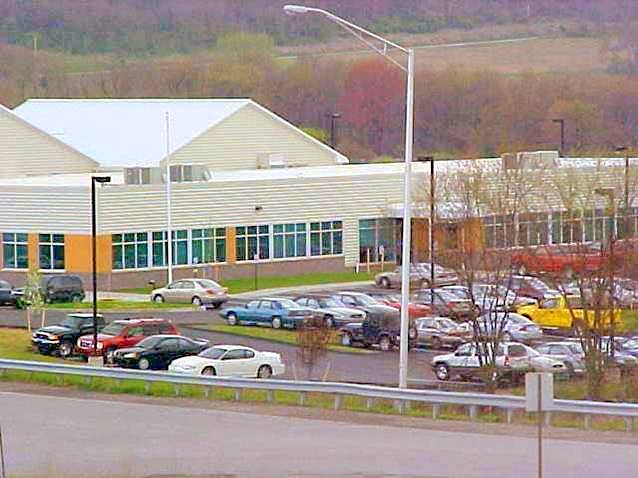When Mark Lampert was a kid, his mom stayed home with him and his brothers. His dad was out the door by 4:30 every morning, driving to the commuter lot in their distant Houston suburb to take the bus in to the city for work. He had friends whose parents both worked, and when those friends came home from school they had the house to themselves – “which is why we went over there to build pipe bombs,” Mark said. At Mark’s house, dinner was ready and everyone was home by 6:00 every night.

These days, Mark is living very differently. He lives in the Dupont Circle neighborhood of Washington, DC with his wife, April. She works long days as a journalist, biking or riding the metro a short 10 to 15 minutes to her downtown office. His dream job as a video game sound designer has him commuting far beyond the reaches of the metro red line, over an hour each way. They often don’t manage to sit down to dinner until 9:00.
He normally takes the train, but things get complicated during his months-long crunch times at work, when he's up against a video game release deadline. The Ride-On bus he takes from the metro doesn’t run late, so he has to drive during those times -- and lengthen an already painfully long day, circling around endlessly when he gets home to find a parking spot. It gets even hairier when they think about having a family, which they’d like to do soon. It’s hard to imagine a child care situation where they could equitably split drop-offs and pick-ups.
April and Mark used to live out in the suburbs, closer to his work, but they ached to get back into the city. “We knew it would be a lot harder for him time-wise,” April said, “but there’s so much vibrancy about living in the city.”
Their situation is shaped by three coinciding trends: the rise of the dual-income household, the increased desire for urban living, and the spread of job sprawl.
In the 1950s, 57 percent of residents and 70 percent of jobs were located in central cities; in 1990, they were about 37 and 45.
When Mark’s parents were graduating from high school, 35 percent of married women worked outside the home. By the time Mark graduated from high school in the late 1990s, it was 61 percent, which is about where it is now. That means that rather than locating a household to be convenient to one person’s job, families are now struggling to find the sweet spot where two people will have a reasonable commute to two different workplaces.
Sometimes they choose to live between the two. Anecdotally, I see more people making the choice April and Mark made: living where one can have an easy, car-free commute, and the other has a much longer haul. The lack of parking in their inner-city neighborhood is no problem for her, but it causes him no end of headaches.
Couples like April and Mark have a harder time finding that sweet spot because of job sprawl, or the decentralization of employment outside of central cities. According to a study published in 1993 in the Journal of Economic Perspectives [PDF], people – and employers -- have been shying away from central cities for decades:
In the 1950s, 57 percent of MSA [Metropolitan Statistical Area] residents and 70 percent of MSA jobs were located in central cities; in 1960, the percentages were 49 and 63; in 1970, they were 43 and 55; in 1980 they were 40 and 50; in 1990, they were about 37 and 45.
Elizabeth Kneebone at the Brookings Institution updated these findings in 2009 [PDF] (another update will be coming out this fall). She found that the trend of job sprawl has continued, and that it affects almost every major industry.
Employment steadily decentralized between 1998 and 2006. Ninety-five out of 98 metro areas saw a decrease in the share of jobs located within three miles of downtown. The number of jobs in the top 98 metro areas increased overall during this time period, but the outer-most parts of these metro areas saw employment increase by 17 percent, compared to a gain of less than one percent in the urban core.
Job sprawl has spread at the same time that dual-income households are on the rise. While more research is needed to gauge the effects on working couples and families, it stands to reason that dispersed employment makes it harder for two people to both land jobs with a sane commute, and to figure out where to set up a household.
The growing decentralization of employment also lags behind the increasingly strong demand for city living. The housing market is beginning to correct itself after the distortions of past decades, when developers over-built in the suburbs. Growth is stalled in outer suburbs and lighting up in central cities and walkable suburbs. Housing values in walkable places weren't hit as hard and are rebounding faster than the McMansion neighborhoods that became “toxic” foreclosure zones.
This is another reason why now is a terrible time for employers to be locating on suburban corporate campuses, accessible only by eight-lane arterial roads, with no where but the company cafeteria to eat lunch. Their applicant pool wants to live in the city, and they want a short commute on transit.
Employers need to catch on to these realities – fast. Not only will relocating to cities align with women's equal participation in the workforce and the growing preference for urban living, it helps their bottom line, bringing them closer to where the talent is.





